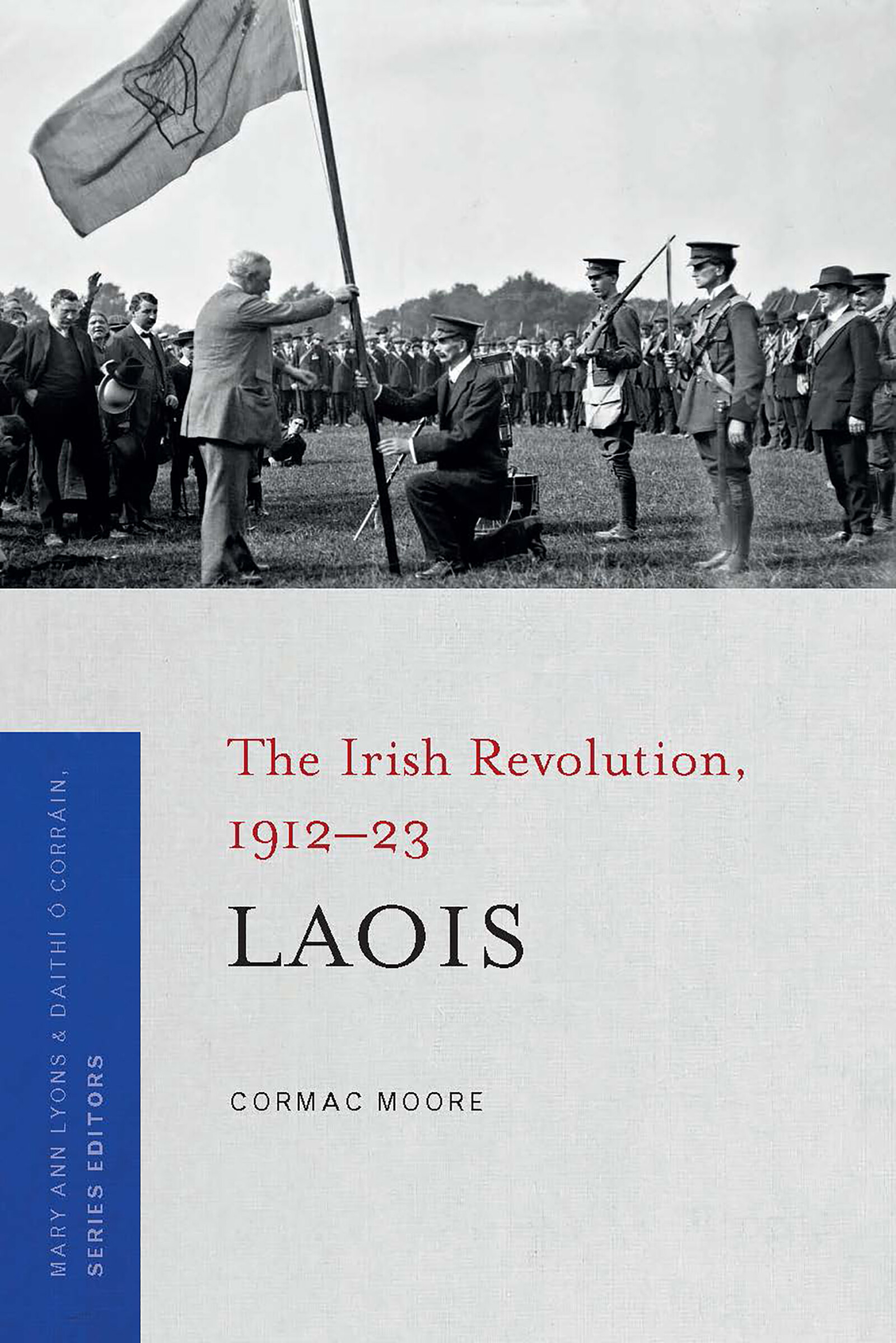Laois: The Irish Revolution, 1912-23. Book Launch
Sean Fleming TD and former minister Charlie Flanagan will launch Laois: the Irish Revolution, 1912-23 on Thursday 3rd April next at Portlaoise Library, 23 Main St, Maryborough, Portlaoise, Laois, R32 N7EP. Copies of the book will be on sale on the night
The turbulent revolutionary period in modern Irish history from 1912 to 1923 had a profound impact on the political, economic and social make-up of Laois. The issue of land that had dominated the landscape of Laois from the late nineteenth century onwards, continued to do so during the Irish revolutionary years, often intertwined with the major political developments of the era.
Cormac Moore’s book explores how seismic national events from the third home rule crisis, through to the First World War, the 1916 Easter Rising, the War of Independence and the Civil War affected Laois.
Moving beyond looking at the Irish Revolution just through the prism of political violence, the book shows how the independence movement in Laois played its part in contributing to the Revolution through the creation of Sinn Féin’s counter-state, by taking control of local government and inaugurating republican courts. Given Laois’s central location, its extensive transport network was used either to curb the movement of troops and supplies or to gather intelligence that was used nationally. The frequently used tool of boycotting in Ireland was adopted extensively in Laois against members of the Royal Irish Constabulary (RIC), against traders conducting business with Belfast-based firms, and against loyalists, sometimes due to land disputes rather than for political reasons. The boycotting of loyalists intensified during the Truce period and the Civil War in Laois, with the latter conflict causing far more bloodshed in the county than had been experienced beforehand.
Moore’s book provides a comprehensive extensively researched account of how the Irish Revolution impacted on all sections of Laois society at the time, with its effects reverberating for years after.

